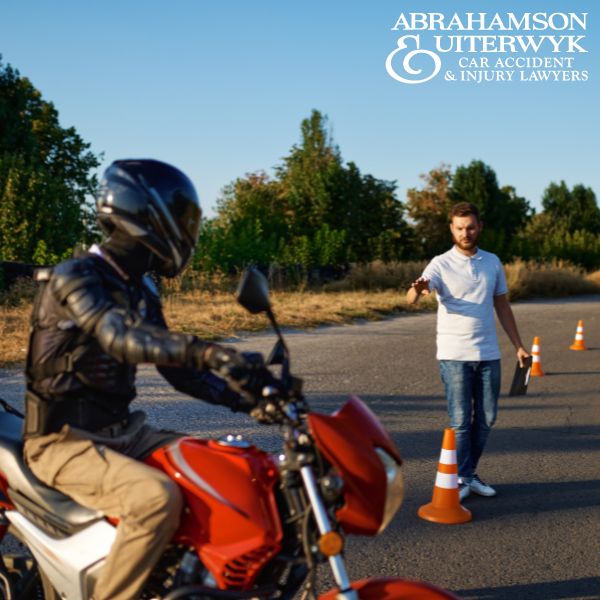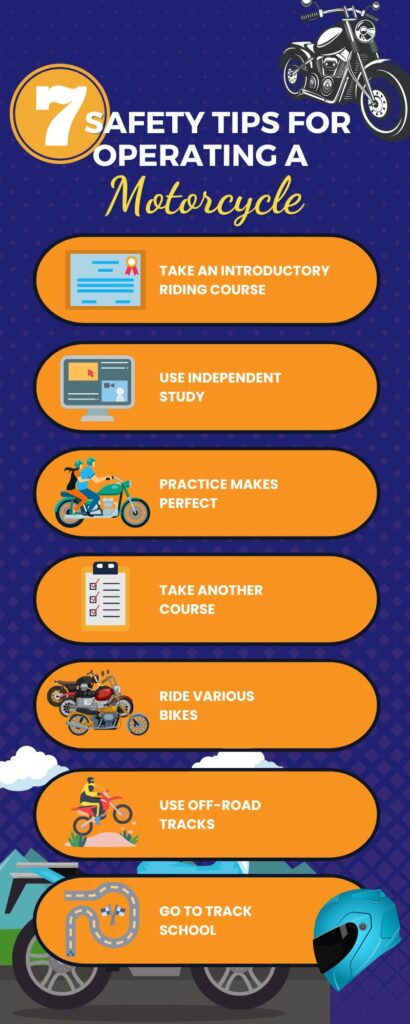
With more motorcycle riders on Florida roads, conscientious drivers can take steps to avoid motorcycle accidents. Besides the important safety measures a rider can take, like always wearing a helmet and never operating their motorcycle while under the influence, there are seven other basic steps that they can take to avoid these often tragic accidents.
1. Take an Introductory Riding Course
Riding a motorcycle is different than driving a passenger vehicle. An introductory training course can teach the basics of how to ride a motorcycle in Tampa, FL, moving you to a novice and providing additional skills for an experienced rider.
2. Use Independent Study
Most motorcycle riders learn how to ride by practicing on their own or with help from a friend. However, a wealth of information is available through books and movies. New riders can learn about the basics of motorcycle riding through these resources. This can help them avoid getting into a motorcycle accident and help them properly understand the most up-to-date motorcycle laws. Another option is to subscribe to a periodic magazine that shows how to ride motorcycles safely.

3. Practice Makes Perfect for Avoiding Florida Motorcycle Accidents
To become a good motorcycle rider, it is necessary to practice. When first beginning to ride, a person should practice in a safe area that is not subject to high traffic. Riders can focus on aspects such as clutch control, making maneuvers in limited spaces, braking correctly, and turning the bike as needed.
Using some safety cones or bright boundaries can help a new rider learn basic skills. Riders who are just learning how to ride a motorcycle should start off slow with small goals and then slowly move toward more complicated tasks.
4. Take Another Course
Skill improvement courses can help drivers continue to acquire more experience and avoid the chances of getting into a motorcycle accident. These courses help teach riders how to ride in a safe manner and avoid aggressive driving.
5. Ride Various Bikes
A rider may get used to a particular bike, but this will not help the rider learn how to adjust to many different types of motorcycles on the market. Different bike designs require an altered form of riding. Taking this step can also help broaden riders’ skills.
6. Use Off-Road
Using an off-road track can help riders adjust to their environment and be more in tune with their surroundings, and is a great option when you are learning how to operate a motorcycle in Tampa, FL. Using an off-road bike is best for this step.
7. Go to Track School
Track schools provide riders with advanced training. Riders don’t need a sportbike to participate in most of these schools. These schools help improve riders’ skills for street riding and take place in traffic-free areas.
Motorcycle Safety Awareness
Here is our collection of 5 safety tips for Motorcycle Safety Awareness. It’s crucial to remember that we all share the road, regardless of whether we’re driving a car, truck, motorcycle, scooter, bicycle, or simply walking as a pedestrian. By looking out for one another, we can create a safer environment for everyone.
- Always signal, check your mirrors, and double-check blind spots.
These behaviors are good habits, to begin with, and they are doubly important when sharing the road with motorcycles. Because they are more compact, motorcycles may go unnoticed in a casual glance before a lane change, especially in low light or bad weather. Try to make sure you see them and they see you. - Treat motorcycle turn signals with caution.
If you approach a motorcycle with an activated turn signal, wait for a moment to see what they’ll do. Unlike cars, many motorcycle signals aren’t self-canceling, so the motorcyclist must remember to manually turn the signal off. Give it a moment to see if they are actually turning or changing lanes. - For large vehicles, be aware of blind spots.
If you are driving a big truck or a van, you’re probably aware your field of view can be limited. Your blind spots are larger than those of other vehicles, making it harder to see smaller cars and motorcycles around you. Be cautious when making turns or changing lanes by keeping in mind that a biker might be difficult to see. - Never try to pass a motorcyclist in the same lane.
You may think that because motorcycles are smaller and don’t take up the entire lane, it’s okay to pass them in the same lane. Think again. Give a motorcyclist the full lane and give them enough space in all directions, the same way you would any other vehicle. - Give motorcycles a safe passing and following distance.
Many motorcyclists slow down by letting off the throttle or downshifting (instead of outright braking), so you may not always see brake lights to alert you of a motorcyclist’s stop. Allow 3 to 4 seconds of following time for motorcycles, and always assume a motorcyclist will brake when approaching a stop at an intersection. When it comes to passing a motorcycle, drivers who unintentionally pull in front of a motorcyclist without allowing enough space can force the rider to over-brake, slide, and fall.
Have You Been Seriously Injured in an Accident in Our Area? Call Our Experienced Florida Motorcycle Injury Attorneys Today!
If you have been injured in a motorcycle accident, call Abrahamson & Uiterwyk today and speak to one of our Florida motorcycle accident lawyers at 1-800-538-4878 for a free initial consultation and case evaluation.

What Our Happy Clients Say About Us On Google:
They did an excellent job with my motorcycle accident. Jennifer kept me updated with the progress of the case. Thanks again for handling my case.
Mark K.
⭐⭐⭐⭐⭐
And see more of our 314+ reviews on Google.
